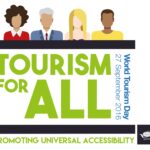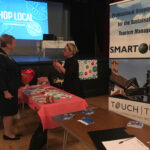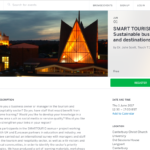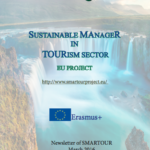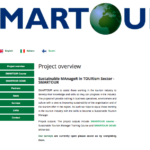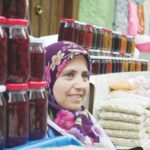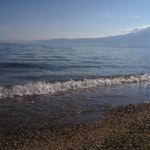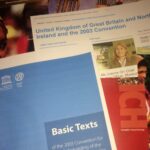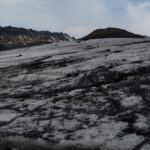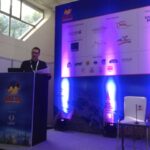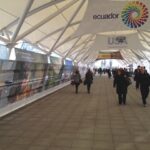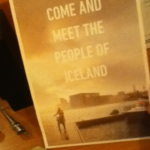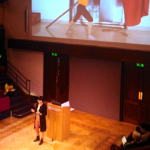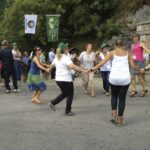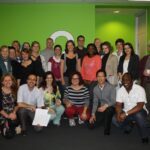- Bringing new sites onboard with culturati
Touch summarises the process for new sites interested in utilising CULTURATI platform
#HorizonEurope
- Expanding the inventory of ICH in Jersey 🇯🇪
Touch TD kick starts the construction of an ICH in Jersey inventory with a lively launch event and a round of media interviews
- ArcticHubs 🎮 digital ‘serious game’ explores new horizons in Iceland
Touch TD finds new horizons and discussions in Iceland as we share ideas around the serious game route to co-creating research in the Arctic 🌋
- The CULTURATI Pilot sites are coming alive!
Touch navigates around a number of CULTURATI #HorizonEurope pilot sites. Meridaunia in Puglia and Blenheim Palace in Oxfordshire came centre stage this month.
- ArcticHubs digital ‘serious game’ – Bridging Worlds 🎮
Touch TD reach out on a voyage of discovery into the world of serious games 🎮
- ArcticHubs – Sustainable results, Lasting Friendships
Touch TD says goodbye for now to ArcticHubs. But with an approach that look to sustain results, there is plenty on the horizon to ensure we continue our Arctic journey 𐂂
- Intangible cultural heritage through a Jersey lens 🇯🇪
Touch TD kick starts the construction of an ICH in Jersey inventory with a lively launch event and a round of media interviews
- Touch TD present ArcticHubs results in a nutshell 🐿️
Touch TD help the ArcticHubs project circulate its key findings and solutions through a lively webinar series
- Day at the museum – CULTURATI in Istanbul
Touch is back in Istanbul with the dynamic CULTURATI #HorizonEurope Research Innovation Action. Rahmi Koc museum played host, as we move inside one of the 4 case study sites
- Social Licence to Operate (SLO) – can it help communities receiving cruise tourism in the Arctic? ⚓️
Touch TD set sail on an Arctic cruise, and test if the concept of social licence to operate (SLO) may be viable to apply in the tourism sector?
- Varangerfjord – Resilience and innovation on the fringes of the European Arctic
Touch TD drops in on an unassuming Arctic outpost, that is adapting to climate change whilst simultaneously getting used to becoming a new political hotspot!
- CULTURATI
A #HorizonEurope Research Innovation Action – developing, testing, and validating an online platform utilizing cutting-edge AI technologies to create content collectively for cultural heritage and arts across Europe
- Casting out the arctic research net – in the field with Touch in Tromsø
Touch TD take a closer look at research around the challenges faced when balancing aquaculture, fisheries and tourism in Arctic Norway
- Retaining jobs – sustaining communities in the westfjords of Iceland
The ArcticHubs project team in the remote Westfjords corner of Iceland, focus applied research into how rural communities may be more effectively sustained
- Everyday oral histories – what makes Digbeth, Digbeth?
This brief article reflects upon a recent experience Touch TD had gathering oral histories from around the industrial heritage heartland of Birmingham. It outlines how the collecting of such experiences and memories…
Read more: Everyday oral histories – what makes Digbeth, Digbeth?
 Touch summarises the process for new sites interested in utilising CULTURATI platform #HorizonEurope
Touch summarises the process for new sites interested in utilising CULTURATI platform #HorizonEurope Touch TD kick starts the construction of an ICH in Jersey inventory with a lively launch event and a round of media interviews
Touch TD kick starts the construction of an ICH in Jersey inventory with a lively launch event and a round of media interviews Touch TD finds new horizons and discussions in Iceland as we share ideas around the serious game route to co-creating research in the Arctic 🌋
Touch TD finds new horizons and discussions in Iceland as we share ideas around the serious game route to co-creating research in the Arctic 🌋 Touch navigates around a number of CULTURATI #HorizonEurope pilot sites. Meridaunia in Puglia and Blenheim Palace in Oxfordshire came centre stage this month.
Touch navigates around a number of CULTURATI #HorizonEurope pilot sites. Meridaunia in Puglia and Blenheim Palace in Oxfordshire came centre stage this month. Touch TD reach out on a voyage of discovery into the world of serious games 🎮
Touch TD reach out on a voyage of discovery into the world of serious games 🎮 Touch TD says goodbye for now to ArcticHubs. But with an approach that look to sustain results, there is plenty on the horizon to ensure we continue our Arctic journey 𐂂
Touch TD says goodbye for now to ArcticHubs. But with an approach that look to sustain results, there is plenty on the horizon to ensure we continue our Arctic journey 𐂂 Touch TD kick starts the construction of an ICH in Jersey inventory with a lively launch event and a round of media interviews
Touch TD kick starts the construction of an ICH in Jersey inventory with a lively launch event and a round of media interviews Touch TD help the ArcticHubs project circulate its key findings and solutions through a lively webinar series
Touch TD help the ArcticHubs project circulate its key findings and solutions through a lively webinar series Touch is back in Istanbul with the dynamic CULTURATI #HorizonEurope Research Innovation Action. Rahmi Koc museum played host, as we move inside one of the 4 case study sites
Touch is back in Istanbul with the dynamic CULTURATI #HorizonEurope Research Innovation Action. Rahmi Koc museum played host, as we move inside one of the 4 case study sites Touch TD set sail on an Arctic cruise, and test if the concept of social licence to operate (SLO) may be viable to apply in the tourism sector?
Touch TD set sail on an Arctic cruise, and test if the concept of social licence to operate (SLO) may be viable to apply in the tourism sector? Touch TD drops in on an unassuming Arctic outpost, that is adapting to climate change whilst simultaneously getting used to becoming a new political hotspot!
Touch TD drops in on an unassuming Arctic outpost, that is adapting to climate change whilst simultaneously getting used to becoming a new political hotspot!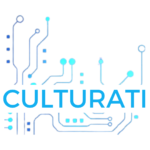 A #HorizonEurope Research Innovation Action – developing, testing, and validating an online platform utilizing cutting-edge AI technologies to create content collectively for cultural heritage and arts across Europe
A #HorizonEurope Research Innovation Action – developing, testing, and validating an online platform utilizing cutting-edge AI technologies to create content collectively for cultural heritage and arts across Europe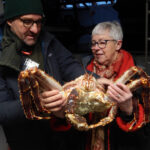 Touch TD take a closer look at research around the challenges faced when balancing aquaculture, fisheries and tourism in Arctic Norway
Touch TD take a closer look at research around the challenges faced when balancing aquaculture, fisheries and tourism in Arctic Norway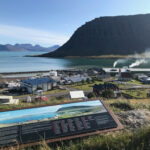 The ArcticHubs project team in the remote Westfjords corner of Iceland, focus applied research into how rural communities may be more effectively sustained
The ArcticHubs project team in the remote Westfjords corner of Iceland, focus applied research into how rural communities may be more effectively sustained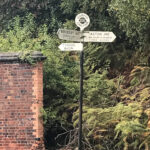 This brief article reflects upon a recent experience Touch TD had gathering oral histories from around the industrial heritage heartland of Birmingham. It outlines how the collecting of such experiences and memories… Read more: Everyday oral histories – what makes Digbeth, Digbeth?
This brief article reflects upon a recent experience Touch TD had gathering oral histories from around the industrial heritage heartland of Birmingham. It outlines how the collecting of such experiences and memories… Read more: Everyday oral histories – what makes Digbeth, Digbeth?